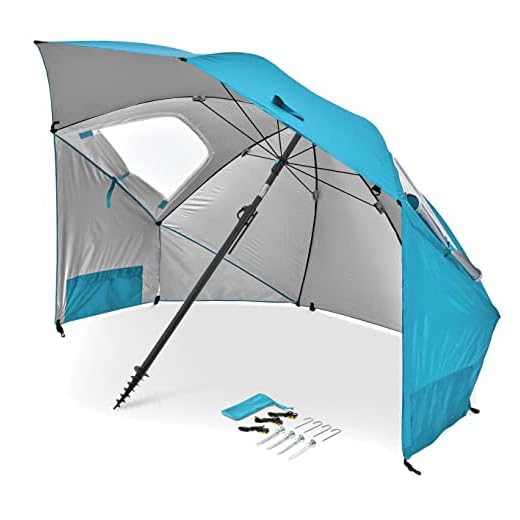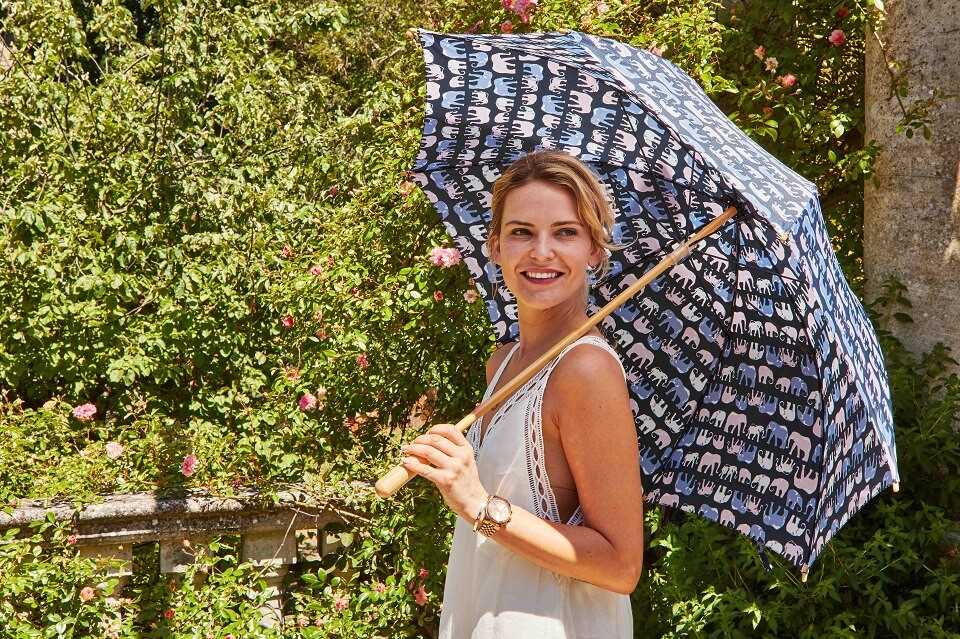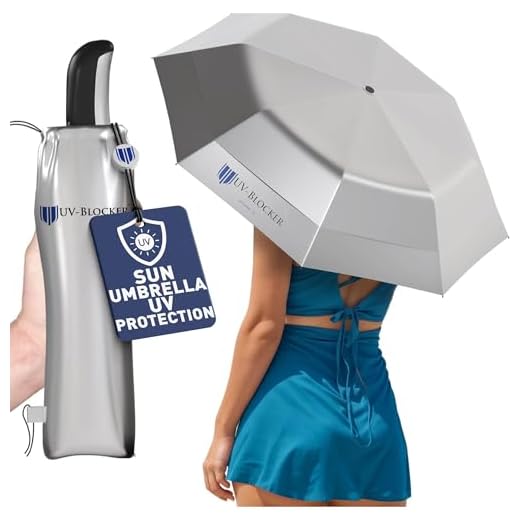


For optimal UV shielding, consider fabrics like polyester and olefin. These materials offer significant defense against harmful sunlight. Polyester, often treated with UV-blocking agents, can reflect a substantial portion of UV radiation, making it a popular choice for outdoor settings.
This article serves as a guide for anyone looking to enhance their outdoor experience while minimizing sun exposure. It provides insights into the best fabric options, their properties, and how they can effectively shield against ultraviolet light, ensuring safety without sacrificing comfort.
You’ll find detailed comparisons of various textiles, their durability, and their effectiveness in blocking UV light. Additionally, we discuss maintenance tips to prolong the lifespan of your sun shields, making your investment worthwhile. By the end, you’ll have a clear understanding of which fabric suits your needs best, helping you make informed decisions for outdoor activities.
Best Material Umbrella Protection Against UV Rays
Choosing the right fabric for a sunshade can significantly impact its ability to block harmful ultraviolet (UV) light. Certain textiles are designed specifically to provide higher levels of UV defense, ensuring better safety during outdoor activities.
Polyester and acrylic materials are among the most effective choices. These fabrics often include additional coatings that enhance their UV-blocking characteristics. For example, a polyester blend with a UV-resistant treatment can block up to 98% of harmful sunlight, making it an excellent option for long days outside.
Key Characteristics of UV-Blocking Fabrics
When selecting a sunshade, consider the following attributes:
- UPF Rating: A higher Ultraviolet Protection Factor (UPF) indicates better UV defense. Look for materials with a UPF of 30 or higher.
- Weight: Denser fabrics typically provide superior protection due to their tighter weave.
- Coatings: Fabrics with special UV-reflective coatings enhance their protective abilities.
In addition to fabric type, the construction of the shade itself can influence its effectiveness. A double-layered design can further enhance the barrier against UV exposure. Always check for certifications that validate the UV-blocking claims of the materials used.
Investing in a high-quality sunshade can lead to better health outcomes by reducing the risk of skin damage. The right choice of fabric not only provides comfort but also ensures that you can enjoy outdoor activities with peace of mind.
Understanding UV Protection Ratings in Umbrellas
The UV protection rating of a shading device is a key factor in its ability to shield users from harmful ultraviolet exposure. Ratings are typically categorized by a standard measurement known as UPF, which indicates the level of UV radiation that can penetrate the fabric. A higher UPF rating signifies greater protection, making it essential to understand these values when selecting a suitable product.
Common UPF ratings include UPF 15, 30, 50, and beyond. Fabrics rated UPF 30 block approximately 97% of UV rays, while those rated UPF 50 can filter out about 98%. It is advisable to choose items with a minimum of UPF 30 for adequate safety during prolonged outdoor activities.
Factors Influencing UV Ratings
Several elements affect the UV protection level of a shading device:
- Material Composition: Fabrics like polyester and nylon often offer better UV resistance compared to cotton.
- Color: Darker colors typically absorb more UV radiation than lighter shades, providing enhanced protection.
- Weave Density: Tightly woven materials generally block more UV light than loosely woven alternatives.
- Coatings: Some fabrics come with special treatments that increase their UV blocking capabilities.
When evaluating options, consider not only the UPF rating but also the specific context of use. For instance, recreational activities near reflective surfaces, such as water or sand, may require even higher ratings for optimal safety.
| UPF Rating | UV Protection |
|---|---|
| 15 | 93.3% |
| 30 | 96.7% |
| 50 | 98% |
Using items with higher UV protection ratings can significantly reduce the risk of skin damage, making informed decisions crucial for outdoor enthusiasts and daily users alike.
Comparative Analysis of Fabric Types for UV Resistance
Choosing the right fabric significantly influences the effectiveness of shielding from harmful solar exposure. Various textiles exhibit different levels of resistance to ultraviolet radiation, impacting their suitability for outdoor use.
Cotton is a commonly used option, but its UV blocking capabilities are limited unless treated with special coatings. While breathable and comfortable, untreated cotton can allow a substantial amount of UV light to penetrate. In contrast, polyester stands out for its durability and inherent UV resistance, making it a preferred choice for outdoor applications.
Key Fabric Types and Their UV Resistance
- Cotton: Natural fiber, typically provides low UV protection unless treated.
- Polyester: Synthetic fabric, known for high UV resistance and longevity.
- Nylon: Offers good UV blocking while being lightweight and quick-drying.
- Canvas: Heavier fabric with decent UV resistance, ideal for durability but may trap heat.
- Microfiber: Dense weave provides excellent UV protection along with water resistance.
Each fabric type has unique properties that affect its performance. For example, the thickness and weave density can enhance UV blocking capabilities. A tightly woven fabric will generally provide better coverage than a loose weave.
| Fabric Type | UV Resistance Rating | Breathability |
|---|---|---|
| Cotton | Low | High |
| Polyester | High | Moderate |
| Nylon | Moderate | High |
| Canvas | Moderate | Low |
| Microfiber | Very High | Moderate |
In conclusion, selecting the right textile is crucial for maximizing defense against solar exposure. Understanding the characteristics of each fabric aids in making an informed decision based on specific outdoor needs.
Innovative Technologies Enhancing UV Shielding in Umbrella Fabrics
Advanced coatings and fabric treatments significantly enhance the ability to block harmful sunlight. Many manufacturers utilize specialized chemical compounds that absorb UV light, converting it into heat, which is then dissipated, preventing it from reaching the skin. These innovations ensure that users can stay protected during outdoor activities.
In addition to coatings, weaving techniques play a crucial role in the effectiveness of sun-blocking textiles. Tight weaves and multi-layer constructions create barriers that obstruct UV penetration. The incorporation of reflective materials into the fabric also aids in redirecting sunlight away from the user.
Key Technologies
- UV-Absorbing Polymers: These are integrated into the fibers themselves, enhancing durability and longevity of the sun-blocking capability.
- Reflective Coatings: Applied on the exterior, these coatings help bounce back UV light, minimizing exposure.
- Microfiber Developments: Lightweight, yet dense structures that trap UV light effectively without sacrificing breathability.
Research indicates that the combination of these technologies can significantly reduce the amount of UV radiation that reaches the skin. A recent study found that fabrics with advanced UV-blocking capabilities can achieve a protection factor of up to 99%. This is particularly beneficial for individuals who spend prolonged periods outdoors.
Investing in products featuring these innovations not only enhances comfort but also contributes to long-term skin health. As awareness about the dangers of UV exposure grows, so does the demand for high-performance textiles that deliver superior shielding.
Final Thoughts on Choosing UV-Blocking Canopy Fabrics
Opt for fabrics that offer a high Ultraviolet Protection Factor (UPF) rating, ideally 50 or higher, to ensure maximum shielding from harmful sunlight. Look for tightly woven materials, as they can significantly reduce UV transmission compared to loosely woven alternatives.
Consider the weight and durability of the fabric, as heavier materials often provide better protection and longevity. Additionally, seek options with special coatings or treatments that enhance UV resistance, ensuring they remain effective over time.
Key Recommendations
- UPF Rating: Choose fabrics with a UPF of 50+ for optimal defense.
- Weave Density: Tightly woven textiles are preferable for reducing UV passage.
- Material Weight: Heavier fabrics typically offer improved durability and sun shielding.
- Coatings: Look for treated options that boost UV resistance.
- Color: Darker shades can enhance UV protection compared to lighter tones.
By focusing on these attributes, you can ensure that your choice not only provides shade but also effectively diminishes the risk of UV exposure. Prioritize quality features that contribute to long-lasting sun safety.
Best material umbrella protection against uv rays
Features
| Part Number | FBA_741360281158 |
| Model | FBA_741360281158 |
| Color | Reflective Silver |
| Size | 44" |
Features
| Color | Aqua |
| Size | 8-Foot |
Features
| Part Number | MEUWS1B-UWSRY |
| Model | MEUWS1B-UWSRY |
| Color | Royal Blue |
| Size | 5FT Wide |
Video:
FAQ:
What materials are best for umbrellas that protect against UV rays?
When looking for umbrella materials that provide effective UV protection, consider fabrics like polyester and nylon. Polyester is known for its durability and UV resistance, making it a popular choice for outdoor umbrellas. Nylon also offers good UV protection while being lightweight and flexible. Additionally, some manufacturers use a special coating on these fabrics to enhance their UV-blocking capabilities. Look for umbrellas with a UPF (Ultraviolet Protection Factor) rating, as this can give you an indication of their effectiveness against UV radiation.
How can I tell if an umbrella provides adequate UV protection?
To determine if an umbrella offers sufficient UV protection, check for a UPF rating. A higher UPF rating indicates better protection against UV rays. For instance, a UPF of 50 means the fabric blocks 98% of UV radiation. You can also review product descriptions for mentions of UV-blocking technology or specific fabric types known for their protective qualities, such as polyester or a treated fabric. If possible, consult customer reviews or expert recommendations to gauge the umbrella’s performance in real-world conditions.
Are there specific features to look for in UV-protective umbrellas?
Yes, there are several features that can enhance UV protection. First, look for a double canopy design, which can provide additional shade and reduce UV exposure. A reflective coating on the fabric can also help deflect UV rays. Additionally, consider umbrellas with a sturdy frame that can withstand wind, as a broken umbrella may not provide the protection you need. Finally, check if the umbrella can be adjusted to different angles to maximize shade throughout the day.
How does the size of an umbrella affect its UV protection?
The size of an umbrella plays a significant role in its UV protection. A larger umbrella provides more shade, reducing the amount of direct sunlight and UV rays that reach you. This is especially important during peak sunlight hours. However, it’s also essential to consider the positioning of the umbrella. Even a large umbrella may not offer adequate protection if it’s not angled correctly to block the sun. Therefore, when choosing an umbrella, consider both its size and the ease with which it can be adjusted for maximum coverage.








